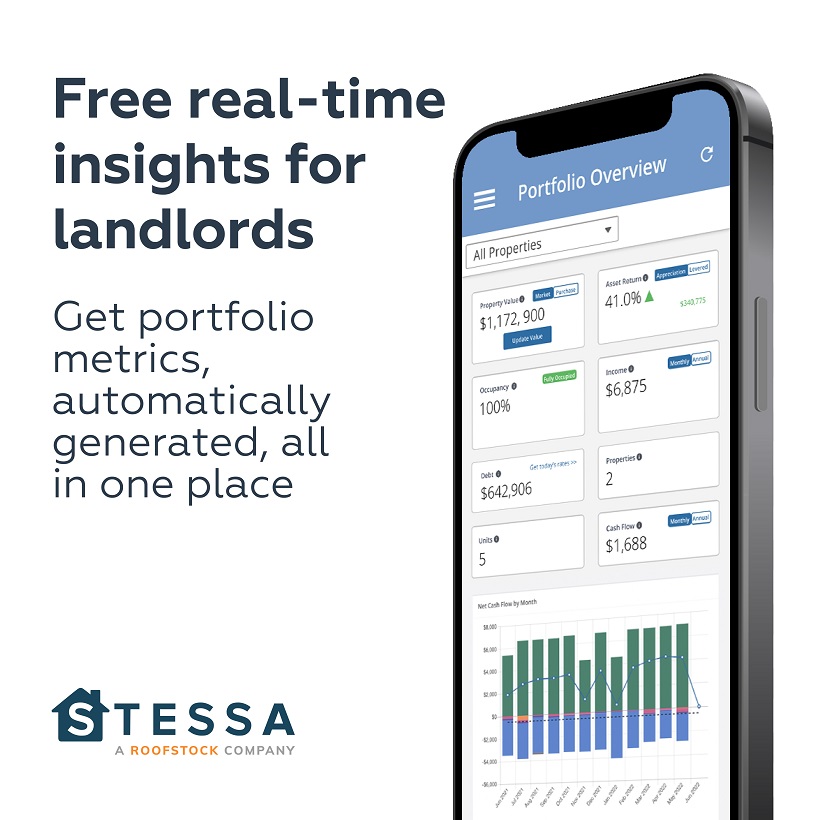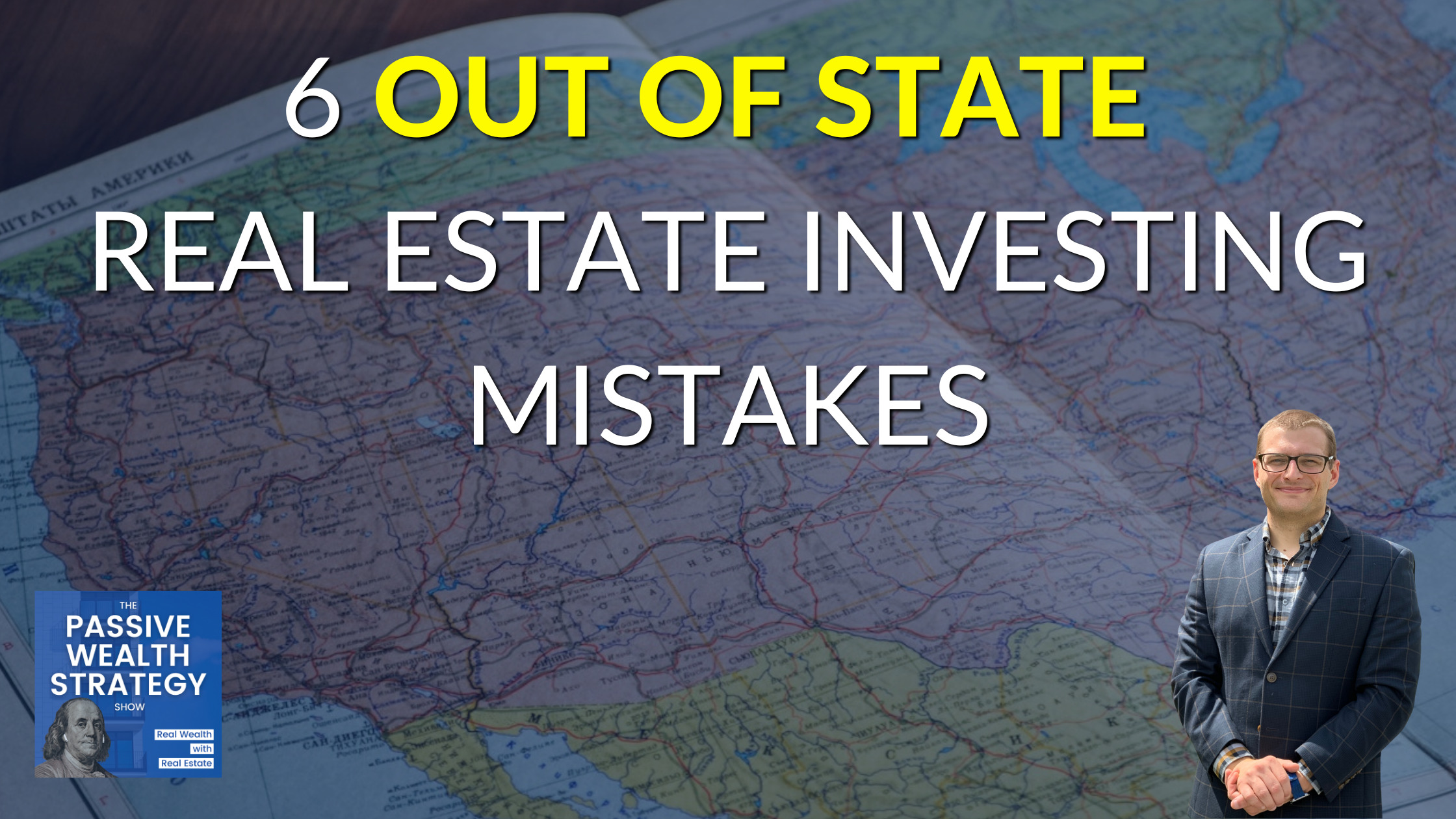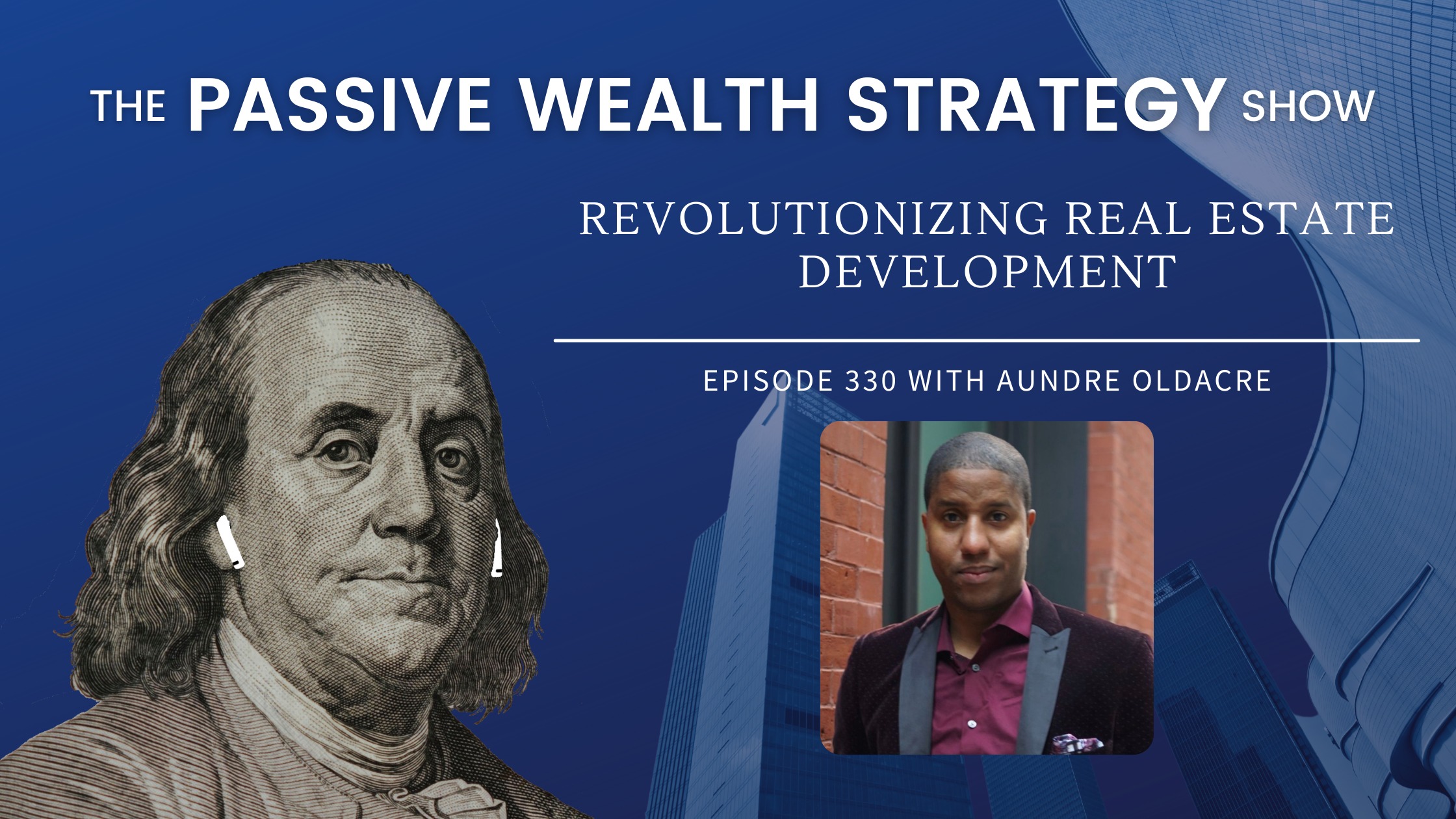
Revolutionizing Real Estate Development with Audre Oldacre
Aundre. Thank you for joining us today.
Thank you for having me.
The Pleasure is all mine. For our listeners out there who don’t know about you and your business at development and everything that you do. Can you give us a quick intro and tell us about what you.
All right. Thanks. So we are developers in the New York City area in and around New York City in the far boroughs and outside in Westchester, long island, New Jersey.
We’re big believers in renewable and sustainable energy. And that also includes us using, we’re very big believers in modular building. I also happen to be the chair of the offsite construction council for the National Institute of building sciences was just named that on October 1st. So very recent appointment.
Yeah. So has, I don’t know if many of but modular construction is, has a lot of benefits. And that it’s built-in the fact where you, while the site work, is being built at the same time. So you got many levels of efficiency, namely, that you basically can save up to 50% of the time in your development, which includes, which is a big saving in holding costs and faster time to stabilization and collecting rent.
And or sales, depending on your strategy. So you also have, in traditional construction, we have up to 30% waste versus modular. You have less than 5% waste because they are in a controlled environment. The factory conditions are much, much better for the workers. It’s safe because it’s, they’re building everything on the first floor instead of, second and third and 50th floor, depending on how. They
You’re building goes, and it’s built-in, basically. Sections of, usually the sections are anywhere from 14 by fifties as a standard size. But then they’re put together on-site with a crane in days, rather than over the course of saying a year. Some efficiencies you also get, you have all your factory equipment there, from electricity to water.
And it’s basically a center, the line, the best way to think about it is it an assembly line, just like a car manufacturer has made. It’s the same level of efficiency you have. And now we’re starting to bring what I call module 2.0 and bringing advanced robotics, like the car manufacturers have made, to start to really get those levels of efficiency.
Right now, most of the module factory is going to see. Are basically an assembly line, but it’s all still very manual and process with some slight efficiencies of automation, maybe screw machines that, screw in 30 screws at the same time. But now you’re starting to really see some. It’s just in the very written infancy stages of starting to implement and learning from the car industry.
The robotics. We’re really excited about that because that will drive down the cost, and we have a huge construction, labor, and labor skilled shortage, especially in the major cities like New York City, which is driving the cost of construction up over $400 a square foot. We can’t control commodity prices like wooden steel.
That’s the same across the board. But what we can do is order in more bulk and get better levels of price as well. So I said, it’s a better environment for the workers because they’re in an air-conditioned environment. On the first floor. So the safety is much, they’re much better working conditions.
They have everything they need tools wise and using BIM technology, building information systems we can quickly find out any errors and emissions. Very quickly on-site versus on-site, which can lead to a lot of change orders and overages and traditional construction. The other problem with construction is that you have.
Change orders and overages. Everything in modular construction is done. All the design work is done pretty much upfront. So you have to make a lot of decisions with your architect, your GC, your structural engineer. They all have to be done all at the beginning, which is tough for a developer who doesn’t have that experience because they’re used to making changes on the fly.
The issue with that is the traditional model. You’re the average cost of overissue9, 20 8%. And if you have 10% in your budget you might run out of money or have to go beg, borrow, and steal for the rest of the money at much higher interest rates. And you may have a stoppage and work. That’s why you see so many projects being taken over by the bank, or you’re being bought out.
Then, we see. A deal like that, maybe once a month, right? And our network of deals that are 85% complete, but the borrower ran out of money because of the developer. And that’s because of traditional construction because they didn’t account for the 35% in overages and mismanagement of their GC.
I can go on and on all just about module, but let’s talk more about what we do and what are our main focus is on our development. We really focus on multifamily. Mainly ground up, but we do, we’ll do some ground. Some property acquisition and retrofits where, as I said, we’re very big believers in renewable energy and sustainability.
So we look to bring in any level of solar. IoT devices that are going to help us with our maintenance and operation costs. We’re looking at Protect and the traditional, a lot of developers and investors are now starting to use the prop-tech like Apollo and Building to manage, which is very efficient levels.
Managing our property. We can even let you sell off manage. Whereas before it was almost impossible to do a 200 unit by yourself without a property manager. And now it’s, with some good management and the right tools you can do that pretty easily with the tools and accounting that all that these are.
Prop tech solutions are now giving. So with some IoT devices and new protect are managing the MEP, which is the mechanical electrical and plumbing, so anytime you have it’s monitoring say, Hey, you have a leak on floor four. You might want to check this out and fix it. It is 10 times more expensive to do an emergency fix than it is to.
Pick it up beforehand and repair it before the pipe burst. So if you can bring down your maintenance costs, its traditional operations costs, and a performer for, a major unit would be 38, 30 5%. Now, if you start to start using solar and. These IoT devices that are monitoring every aspect of your building, including your MEP and HPAC systems, you can now start to lower those numbers down and put your performer numbers even below 25%, which I have to explain to banks and lending institutions.
Every time we have this conversation, because they’re like, wow your operation costs are way too low. The traditional is 35, but here, but this is what we’re doing to combat. Interesting.
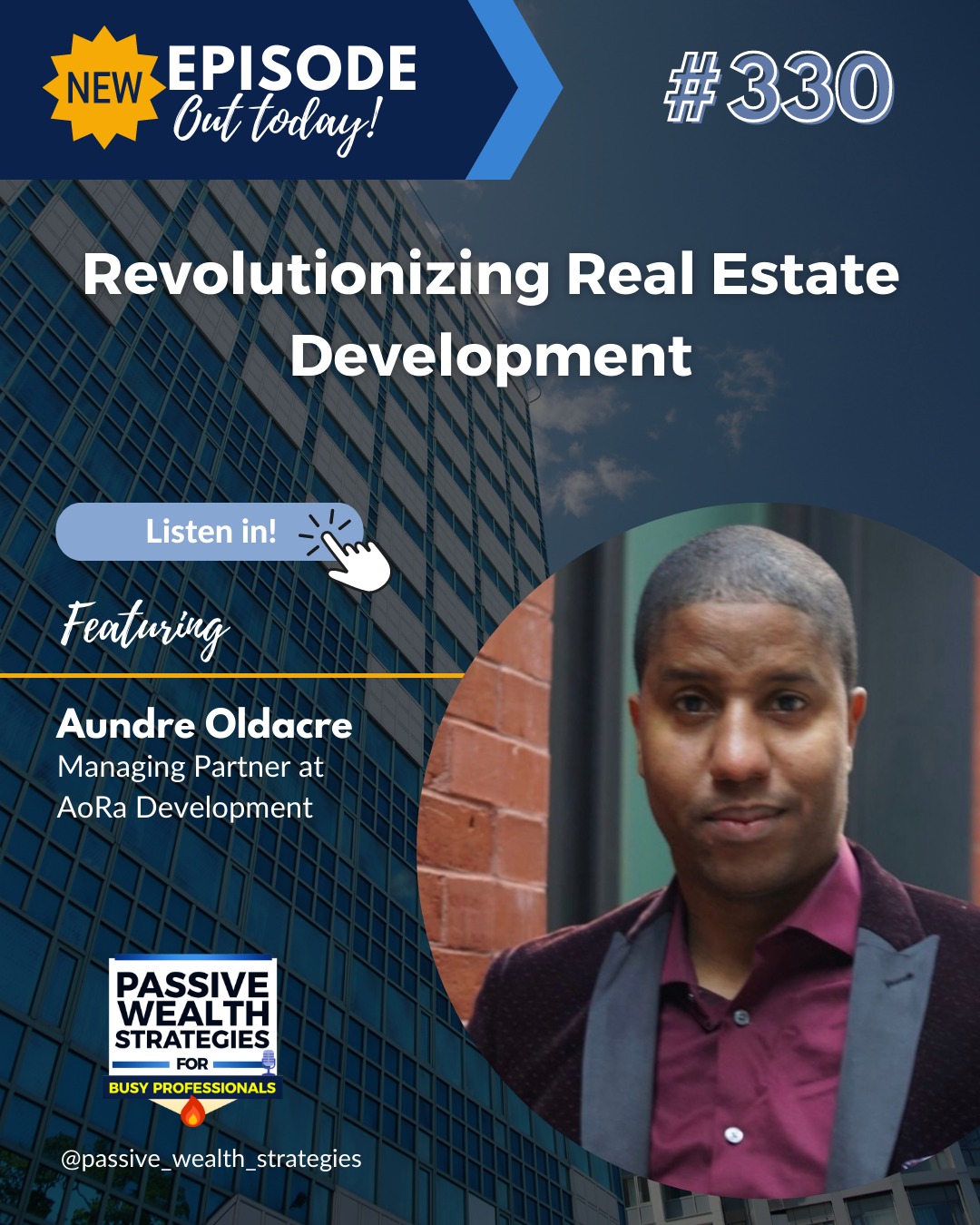
Revolutionizing Real Estate Development with Audre Oldacre
So I do wonder, you mentioned the fourth floor. There are so many questions about this, but that’s surprising that the implication is that the modular construction method works with, taller properties.
Whereas I would have, if I were guessing, I would have said you probably can’t go higher than two stories at most, but you’re saying the fourth floor. How high can you go? And what kind of properties are you talking about?
So the tallest construction project in the world was in the UK. I believe it was 44 stories.
Wow. And we’re getting even higher ill by the year. Right here in Brooklyn where I’m located. We have a 26-story Marriott that’s just about completed. And we also have one by the Barclay center. That’s in that same range in the 20. The floor and that one used to be the largest in the world.
And there have been some newer meds since that’s cool. Some local or manufacturers can go well up to eight and 12 stories very easily, but some of the more advanced can go much higher with structural steel.
Interesting. So when you’re, the modular construction, there’s construction at the factory and then items are delivered to the job site, and it’s all assembled on the final assembly.
I think, anybody that’s driven around the middle of America, we’ve probably seen semi-trailers going down the road with a modular home on the back with siding and all that kind of stuff. But in this case, If you’re talking about a tower, it’s going to be way too big to drive the whole thing just down the highway.
So what’s getting delivered to the site. What’s that all look like in terms of
the logistics, it’s a module box, right? It might be a 14 by 54 box wrapped in protective gear. Two and being delivered to on-site. So it’s just a lot more of them, right? It’s it might be a hundred or 250 boxes that are going to be hosted hoisted-in installed, like Legos on a one by the crane.
All right. So for the local municipality and traffic is also much better because that process is going to take for let’s just called an eight-story building to 20,000 square feet. Let’s call it. That’s going to take maybe two or three days too. Wreck the whole building. Whereas an eight-story building is going to have traffic delays and blockages for as long as the construction is that could be a year and a half, two years.
So you still have cited work blockages and, but it’s much, much less than what you would see. In a traditional.
Interesting. You touched on some of the things that you’re dealing with banks and financing institutions. That kind of sounds like they’re not really quite ready.
They’re not quite there. They haven’t quite caught up with the technology and the financial dynamics around it. Can you tell us more about that and, maybe issues that you’ve had to work through with getting these things financed.
So it’s really about the education from the municipalities that don’t insurance, the lenders.
Every stakeholder is involved, right? So that’s why I joined the offsite construction council, but with nibs and now on the chair, our main objective is to educate all these stakeholders, provide staff standards and policies. From the governmental levels, we’re dealing with HUD and Fannie Mae and putting standards of practice in place, so they can spread it too nationwide to banks and get real people, really comfortable with the lending practices, what to expect.
So for instance with a traditional factory, they’re looking for a 10 to even say, 25% down payment on the project, and they expect the rest at. Setting. So when they come in and deliver the truck, they expect to be paid the full amount then, which is obvious. So some of the things that come up or who are responsible once it leaves the factory, is it the modular factory before getting it before it gets to the actual site?
Is it the factory? Is it a transit company that is responsible for that? So these are the types of issues that we work on with modular. Whether it’s traditional. You might have, you have a lot more draw schedule and your draw schedule, you might have 5%, 10%, 10, 10 for this, you do the plumbing, you get another 10% you do the wall structures.
You might get another 15%. So it’s a lot more as to pay, as you go. Whereas modular is really a two-time processor, most of the time.
Interesting. So how, I guess how finished are the pieces when they arrive? I imagine there’s some level of final fit-up, but, as the plumbing is all installed and what all needs to be done,
So it’s really just it’s.
We like to say it’s between 80 and 90% finished. So you can have outside facades, like brick walls siding, finishing already on the sides of the modules that are going to be outward-facing. But it doesn’t have to be sometimes a lot of times you’ll have flooring or. Maybe countertops or other things that you do install in place just because you’re fitting pieces together, and it might not go together as well when you’re connecting boxes.
So flooring is a trip as one that’s typically done onsite, but it can be done. And you have to obviously connect your plumbing, electricity. They have they’re connected in the, in each box, but there, they have to obviously be connected together to make one whole system onsite. So you usually have, for instance, we’re doing for single-family homes in South Plainfield, New Jersey It’s five hours to erect the home, actual home onsite, neighbors see the house and literally will one day, whereas before it was just the foundation and, hole in the ground.
And now that, the next day they have a full house maybe for that house, we didn’t have siding. And we decided about deciding on afterward. Flooring and some other things, but you can get an idea that it’s pretty, mostly complete 80, 80 to 90%, I would say.
So what would you say is.
Level of adoption of modular construction. And then how much further, do we have to go because, I’m sure there are downsides to everything, but to me, this just makes sense. I don’t see why we wouldn’t look for this kind of efficiency and construction.
Sure. So our construction techniques are over a hundred years old.
If you think about any other technology from car manufacturing to any type of manufacturing if you told them that we’re a hundred years old and what we’re doing with people would go crazy right. A hundred years ago, we weren’t even, we didn’t have computers. We didn’t have TVs, we didn’t have a phone.
To be using, technologies from a hundred, yeah. Had some level of techniques that are speeding up traditional construction, but for the most part, the general gist is the same. Right now we’re just under 5% market share with modular which is good but could be, it should be well over 50, the modular is not for every site, right?
There are sites that are maybe inland that is, too tough too, or you have to go over buildings, which is a big, huge insurance risk. There, You might have uneven land that might not be good for cranes, or you might have telephone poles with wires that it can’t get underneath.
So there are sites that it’s not for every site, but I would say more often than not that you can do a modular and modular can be anything from a single-family home to, multifamily commercial. Usually, the podiums are built traditionally. And then the towers above would be modular. Okay.
Okay.
So if you use, if you have a mixed-use with say a retail LX, whole foods or something, that part would be. Done traditionally, as of now, what we’re, they’re still working on ways to build podiums in the factory as well, but it’s a little tougher.
So where are the factories and how far can they reasonably be located from where they are?
Cause you mentioned some areas being too far inland. So it sounds like there might be, shipping involved or things like that.
We typically say then it’s 300 miles. In fact, we should be within 300 miles for it to be cost-efficient because they aren’t shipping on trucks.
And that’s going to eat up your costs in sit in shipping costs, if you’re not that close or so for the New York area, there’s some in Pennsylvania, there’s a couple in the Westchester area. But for across the country, there is, they’re all over. But we need a lot more, and we need a lot more advanced.
As I was talking about advanced systems modular 2.0, I like to call it where we’re starting to use robotics to this point. There’s really only one good example of it. And that’s with auto vial and out of Idaho using advanced robotics. So there is the model to go, but they’re still using wood in the New York area we require non-combustible, which means we have to use steel and concrete.
So we require, there’s still plenty of room for. Growth in the industry. If you read the McKinsey reports and modular building Institute reports, they all are telling you that this is the only way for us to advance and the construction and fill the void with affordable housing shortage across the country.
Every major city seems to have it, here in New York we have a 250 unit shortage. It’s unacceptable. The average renter and, millennial renter coming out of school is eating up 50% of their income in rent. And that’s just not an affordable lifestyle, right?
So we need, we need that number to be down in the twenties, high, mid to low thirties for it to be an affordable lifestyle we want. And modular is a way that we can get
there. So you said 250, probably 250,000.
250 would feed you badly, but yes, many major metros have serious shortages like that. I think my city is comparable. At least into the future is going to be very comparably, a short. One of the things in billing, in general, that is probably the slowest to change is pretty much always the government.
Now you’re obviously getting involved with that, but know, what do you see into the future to get the regulators on board and, make that all happen. And, the timeframe to really accomplish major changes there.
There’s real technology out there, right? There are digital twins where basically you’re big creating a 3d model of your whole city.
There have been experimental examples of this in New York City, but more and more importantly, there’s one in the small country of Estonia that has created a digital twin of their whole country. And they’re doing error checks and permitting automation by BIM. So if you’re creating a building, and you have.
You submit, you have to submit your project using them and AutoCAD and Revvit, whatever you’re submitting with. And the system is going to automatically check for errors. Hey, this is our code, your electric. The outlet is supposed to be 18 inches off the ground in your BIM model. They’re 14 inches off the ground.
Correct. And it’s going to automatically check that with AR technology, right? So this is the future. This is going to save municipalities time, energy, money. People can do this from their homes. You know what a crisis like COVID, there’s no, there’ll be no stoppage in permits and shortages. You’d have Municipalities be able to cover and issue permits much faster.
They did a, I think they said in their study in Estonia, they had a 40% decrease in cost, and somewhere in I can’t quote me on the numbers on. I can’t, but it’s infinitely faster. I don’t want to put a number out there that is not true, but it’s, let’s call it 50% faster in being able to facilitate a permit.
So that’s amazing for big cities that have these backlogs. Some, I’ve heard of cities having backlogs of a year to get your permitting done. So that’s obvious they’re using paper, and they’re using. One or two plant examiners that are bogged down with way too much work, right?
If they could train them to use this BIM and newer technology and AI technology they could run through projects multiple at the same time, on the same day, really? Cause this, the system automatically checks it on to the next one system automatically checks. And they could be handling back and forth revision.
And there’s much less than the original vision process as well because. The system should know what to be checking for. And your BIM, when you’re on BIM, it should automatically tell you some errors before you even submit. So there are just so many levels of efficiency, saving, both the developer and the city.
That’s awesome. I think we should get that kind of leads to some level of repeatability. Like once, you have a plan approved, and it’s good to go, then we should be able to maybe more easily say rinse and repeat. They can, if they have a revision, they can submit it and have it reviewed relatively easily.
But if there’s like a certain model of property that is good in this area, then we should be able to more easily. Stamp it in another location.
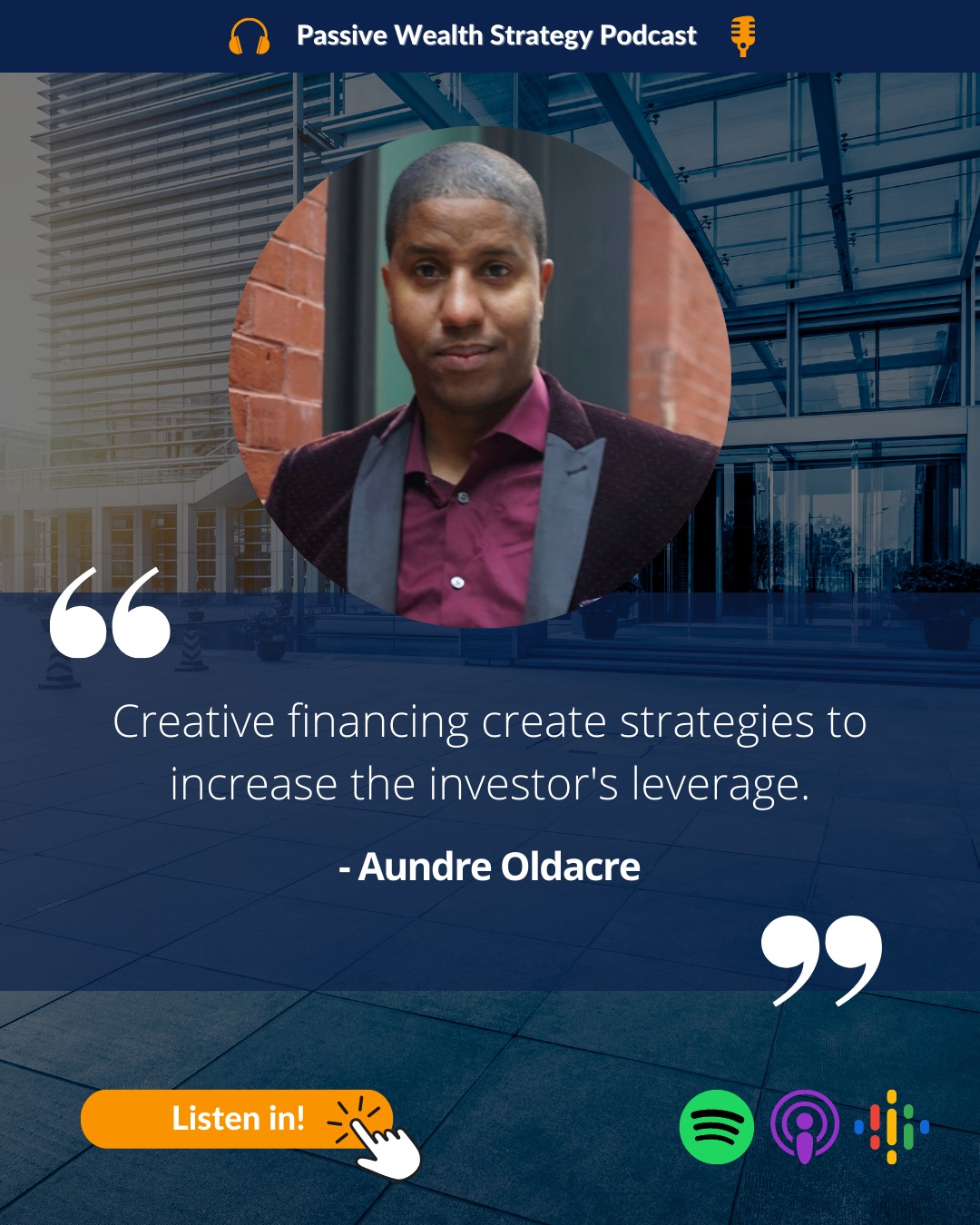
Creative financing create strategies to increase the investor's leverage.
Aundre Oldacre Tweet
Sure. Yeah, absolutely. And if you want to repeat the same housing, as they can, this is public knowledge and public information. They’ll be able to literally take the plans and run with them.
I don’t know how legal that is, but
If you’ve ever been through one of those developments, that’s all Nick mansions. They’re just all cookie cutter as well, but they are very expensive and poorly built. So yeah, we can do better than that. That’s awesome. I’m very excited about what this technology is all going to bring right now.
We’re going to take a quick break for ours. Sure. All right, Andre, I’ve got three questions. I ask every guest on the show. Are you ready? Yes. Great. First one. What is the best investment you’ve ever made other than in your education?
That would be the first house I purchased 15 years ago. It was a.
Three families. It got me started on the road to financial freedom and into this world of construction and real estate, commercial finance. So I live here in Brooklyn. I actually still live in the same home now. I was able to do it back then. We could do 80, 20 loans. So I basically put no money down.
I used all the money for a gut to do a gut renovation, and I was able to create four-family out of it. And. Cash flow is very well today. So that was from that. The house says done very well, able to take out cash of that buy and start to buy more every year, buying more and more to a two to four families.
And I got into commercial real estate because they increased the zoning on one of my properties. And I was going to get ready to buy a neighbor’s property and combine the two and go up to eight stories and build a 24. Oh, I had to get some experience. So I took Cornell’s car commercial real estate classes, and I took Columbia’s construction finance classes.
Then I ended up meeting my partner who had 20 years of construction experience and then AR was formed in early 2018. So we’re a relatively new company. But we’re moving fast and got a lot of. Ambitious projects in the pipeline. We’re looking at 500 units in male Vernon, which is right outside of Westchester.
That can actually, it’s a possibility that could actually be up to 5,000 units and makes you stand parking as well. So we’re looking at some really the big deals, and we’re looking at small deals. We’re in a some, the 32 units, add value to 48 unit. We’re looking at some in the hundred unit levels.
Yeah, but it all comes, it all starts with the beginning. Humble beginnings with one property that did well that got you on the road to. Being able to be financially free and concentrate on what’s really important.
Awesome. To the folks out there who haven’t gotten started, got to remember that a lot of very successful investors just like you, Andre got started with that first one, and then it kinda starts going from there, and you have to get started somewhere.
So it’s the old birth strategy from BiggerPockets, and actually.
I love it. We had the best investment. Now we go to the other side of that coin, the worst investment. What is the worst investment you ever made?
So we were in contract for a 110 unit building we were to build three buildings in eight-story buildings in not far from here in Brooklyn.
We get in contract and later find out there’s a deed restriction to only build Basically a nursing home nursing facility or a homeless shelter. We went down the road of trying to amend our model, and we didn’t want to give up because the site was so great, and we got further and further involved.
We hired consultants and. We just realized there was so much government regulation, and it’s a whole learning curve that we did not want to get involved with. We did not want to be running a homeless shelter and not that there’s anything wrong with that. It’s just, that’s not our cup of tea. It’s not our mission.
So it burned us for quite a bit of money, but we had that we had to pass, and we settled with our down payment and got most of it back. But that was the worst investment.
It sounds pretty painful.
Yeah. It was eight, nine months of work down the drain. Obviously, we were working on other projects, but at the same time, it was, it would hurt, it was a valuable lesson to do a little bit more due diligence in the front because you can really get hurt.
As long as you turned it into a valuable lesson, then you came out better. On the other side, I suppose my favorite question here at the end of the show is what is the most important lesson you’ve learned in business and investing,
Creative financing, creative strategies to increase the investor has been leveraged.
So pace, which is we said we’re very big in paces as an energy loan that rewards you for putting it’s the, I think it stands for a property assessed clean energy, and it’s basically taking the place of mezzanine financing. So it’s just now coming on board in New York City, they have their own plan, but it’s been available in New York state for a while, and it’s available.
Many of the states across the country, so you should look out for it. But what basically what it is you can put, if you increase your efficiency levels from, insulated window. Super installations solar panels, everything that’s making the building more efficient. You’re right now buildings are 40% of our mission.
Total CO2 emissions are coming from buildings. It’s not cars, it’s not manufacturing buildings. So if we can decrease those levels of emissions, in half, which a lot of cities are now mandating by, we have a law called law, local law in 97, which states that you have to decrease your emissions by 2030, by 40%.
So it’s now you have to do it. It’s not a choice. And I commend them for doing that because obviously climate change is here, and it’s a building is a big part of that. And using strategies like pace, we can possibly finance up to 90% of a build, or even in some instances 95, but we’d like to stick with 90 and lever, 10% in equity.
So that drives the IRR. Tremendously and it’s things that we were going to do anyway. We’re going to retrofit an old building with solar, so we can lower our arm, our operating costs. And we’re going to build that into a new, every new build anyway. So it’s right up our alley. And just having good brokers or good systems to get the best financing their program’s always out there.
You always have to be. Check to see what programs are available for the specific type of project that you’re working with. There are opportunities, zones there are and there are investors for every cup of tea, from industrial to the hotel to multifamily. And you can, if you do your homework, you can save tons, millions of dollars in just financing.
If you’re the word out to a lot of lenders out there. We’ve seen rates on, from three, three and a half percent on a new construction deal all the way up to 12. So if you’re talking about a, let’s call it a $10 million project, and you’re paying quadruple in interest charges, it runs up fast.
It makes a lot of mixed, a lot of projects viable, especially what today’s construction costs and shortages are.
Wow. So the power of creative financing, especially getting the best rate you can and, smart, but. Sometimes somewhat aggressive leverage, but being smart about it. Yeah, of course.
Yes. Yeah, absolutely. Andre, thank you for joining us today and thank you for everything that you’re doing out there in the world to make housing more affordable and more sustainable and pushing the technology forward for the rest of us that are in cities where that’s maybe not being adopted yet.
So that’s pretty exciting if folks want to reach out if they want to get in touch with you if they want to learn more about yourself and your business, where can they track?
I’m pretty readily available on LinkedIn. You can reach me as my name is spelled a little differently. It’s Aundre.
Last name Oldacre or you can drop us an email [email protected]. So that’s aoradev.com.
Great. Thank you once again for joining us today to everybody out there. Thank you for tuning in. If you’re enjoying the show, please leave us a rating and review on apple podcasts. I appreciate that so much five stars.
If you don’t mind, that helps other people learn about the show, because that helps us rank higher in the apple podcast ecosystem. And I’m always honest with you guys that gives me a nice little warm and fuzzy feeling because I get to see that you’re engaging with the content, and you’re escaping the Wall Street casino along with us.
If you’re the only one who could use a little bit more passive wealth in their lives, please share the show with them and bring them into the tribe. No matter what podcast app you use, don’t forget to look us up, hit the subscribe button. That way you’ll get every new episode. Every Monday, Tuesday, and Thursday.
We look forward to seeing you right back here. I hope you have, excuse me. I hope you have a great rest of your day, and we’ll talk to you on the next one. Bye-bye.

Solar Flower Tower - AORA Energy Development Israel
About our Guest

Aundre Oldacre
Aundre is a seasoned real estate investor with multifamily properties in Brooklyn, NY and Yonkers, NY. He has transaction experience in short sales, REOs, FSBO, and completed multiple gut renovations for 13 years.
Aundre’s role as a founding partner at AoRa is to find, evaluate, and prepare deals to be underwritten by lenders and investors. He implements various strategies to find off-market deals that are either undervalued development sites or add value acquisitions. Once acquired, he helps manage the process from start to finish, working alongside the team, ensuring the latest technologies are applied for the most efficient and expedient building methods. Aundre prioritizes sustainability, through the utilization of renewable energy sources, municipal tax incentives and programs, virtual doorman and assistants, property management solutions, and modular building. As a result, these practices, increase IRR for investors and the firm.
Aundre has completed the Cornell commercial real estate program. The program all aspects of a commercial deal including acquisition, managing development, financing the deal, creative financing, property management, asset management, and underwriting.
Episode Show Notes
Aundre is a seasoned real estate investor with multifamily properties in Brooklyn, NY and Yonkers, NY. He has transaction experience in short sales, REOs, FSBO, and completed multiple gut renovations for 13 years. Aundre’s role as a founding partner at AoRa is to find, evaluate, and prepare deals to be underwritten by lenders and investors. He implements various strategies to find off-market deals that are either undervalued development sites or add-value acquisitions. Once acquired, he helps manage the process from start to finish, working alongside the team, ensuring the latest technologies are applied for the most efficient and expedient building methods. Aundre prioritizes sustainability, through the utilization of renewable energy sources, municipal tax incentives and programs, virtual doorman and assistants, property management solutions, and modular building. As a result, these practices, increase IRR for investors and the firm. Aundre has completed the Cornell commercial real estate program. The program covers all aspects of a commercial deal including acquisition, managing development, financing the deal, creative financing, property management, asset management, and underwriting.
[00:01 – 10:41] Opening Segment
- Get to know Aundre Oldacre
- Developers in the New York City Area
- Big on renewable and sustainable energy
- What is modular building and construction?
- Modular construction versus traditional construction
- Bringing advanced robotics
- The cost of construction and better environment for workers
- Building Technology and Information Systems
- Aundre and company’s focus
[10:42 – 24:53] Revolutionizing Real Estate Development
- How high can you go?
- 44 Stories in the UK and higher by the year
- Let’s talk logistics
- A module box
- Technology and the financial dynamics
- How finalized is a modular construction?
- The Current Level of Adoption of Modular Construction
- Modular Construction Factories
- The Future of Modular Construction
[24:54 – 37:02] Closing Segment
- Quick break for our sponsors
- Groundfloor offers short-term, high-yield real estate debt investments to the general public. Check www.passivewealthstrategy.com/groundfloor/ to get started.
- What is the best investment you’ve ever made other than your education?
- Aundre’s first house purchase
- Aundre’s worst investment
- A 110-unit building
- What is the most important lesson that you’ve learned in business and investing?
- Creative financing and creative strategies
- Connect with my guest. See the links below.
Resource Mentioned:
Tweetable Quotes:
“The modular is not for every site… it’s not for every site, but I would say more often than not that you can do modular.” – Aundre Oldacre
“It all starts with the beginning. Humble beginnings with one property that did well, that got you on the road to being able to be financially free, and then concentrate on what’s really important.” – Aundre Oldacre
————
Connect with Aundre Oldacre through [email protected], Instagram and LinkedIn. Visit their website https://aoradev.com/.
Invest passively in multiple commercial real estate assets such as apartments, self storage, medical facilities, hotels and more through https://www.passivewealthstrategy.com/crowdstreet/
Participate directly in real estate investment loans on a fractional basis. Go to www.passivewealthstrategy.com/groundfloor/ and get ready to invest on your own terms.
Join our Passive Investor Club for access to passive commercial real estate investment opportunities.
LEAVE A REVIEW + help someone who wants to explode their business growth by sharing this episode or click here to listen to our previous episodes





